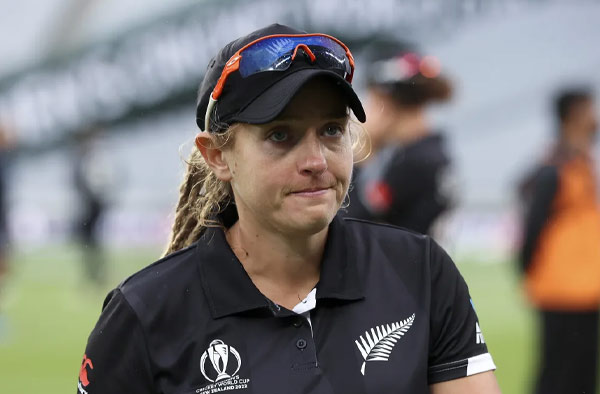The recent 8-0 series defeat suffered by New Zealand at the hands of England has highlighted the challenges facing the White Ferns and raised concerns about the state of women’s international cricket in New Zealand. This comprehensive loss, culminating in a final defeat at Lord’s, stresses on significant gaps in performance and developmental approaches between the two teams. New Zealand all-rounder Frankie Mackay, commenting on the team’s struggles, pointed out the reality despite their best efforts, stating, “It’s not as though they have picked the wrong squad for this tour, but there just isn’t enough of a player pool to choose from at the moment.”

Mackay’s observation highlights the depth issues that have plagued New Zealand, contributing to their inability to compete consistently against top-tier teams like England.
Mackay further remarked on the substantial gap between New Zealand and cricketing powerhouses like England and Australia: “We are still at least a decade behind them.” This assessment underlines the magnitude of the challenge facing New Zealand cricket in catching up to their rivals in terms of infrastructure, investment, and player development.
Central to England’s dominance has been their strong investment in women’s cricket at the domestic level. Mackay acknowledged this, noting England’s advantage in resources and development pathways: “In contrast, England are thriving from increased investment into the women’s domestic set-up with more than 100 professional cricketers at eight regions across the country, with another big restructure starting next year.”
The burden of expectation on New Zealand’s senior players, including stars like Sophie Devine and Suzie Bates, was also highlighted by Mackay: “Their most experienced players are weighed down by the pressure of knowing so much rests on their shoulders.” This pressure has been evident throughout the series, where despite competitive efforts, New Zealand struggled to match England’s consistency and depth.
Mackay’s reflections also touched on missed opportunities for New Zealand, particularly in comparison to England and Australia: “It does feel like we missed the boat with that a little bit in terms of the professionalism and the investment, it allowed England and Australia to get a long way ahead.” Despite having world-class talents, New Zealand has not managed to translate individual brilliance into team success on the international stage, with their last World Cup final appearance dating back to 2010.
Amidst these challenges, Mackay acknowledged positive steps, such as equalizing match fees with men’s cricket and televising domestic competitions like the Super Smash, as signs of a desire to invest in the future of women’s cricket in New Zealand. However, these initiatives must be part of a broader strategy to address systemic issues and improve the overall competitiveness of the team.
As England prepares for the upcoming T20 World Cup with confidence, New Zealand finds itself at a critical juncture. The series defeat against England serves as another wake-up call, demanding immediate attention to grassroots development, expanded player pathways, and enhanced resource allocation. The road ahead requires concerted efforts from administrators, coaches, and stakeholders to bridge the gap and restore New Zealand’s competitive edge on the global stage.
